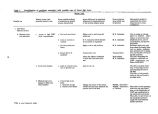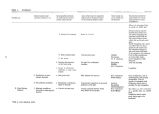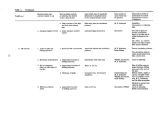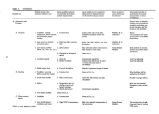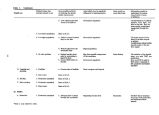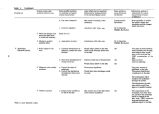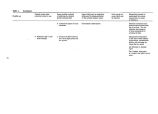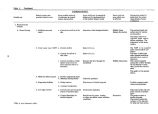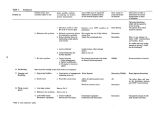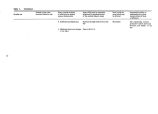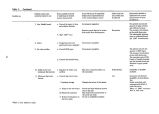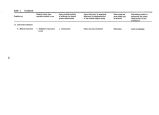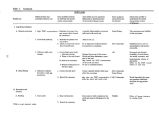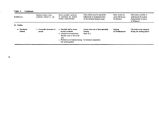| OCR Text |
Show Table 7. Research needs identified for the wildlife use system. Research Needs Possible Information Source Group A Methods of controlling high water damage ( flooding) in both the short and long- term. Methods of dealing with low lake levels. Methods of enforcing restrictions on human access to island rookeries during the nesting season. Economic analysis of the wildlife use of the lake system. The relation between the marsh land and lake ecosystems. Possibility of acquisition of more land for marsh land. Possibility of acquisition of privately owned lake islands. Impact of human intrusion into waterfowl areas. Group B The role of the lake ecosystem in the waterfowl food chain. Energy flow in the marsh land ecosystem. Methods of stabilizing the spring and summer inflows to the marsh lands. Group C Quality of groundwater inflow to the marsh lands. DWR, ACE, UWRL DWR, ACE, UWRL DWLR, UDOT UUBEBR, UWRL, DWLR DWLR, FWS DWLR DWLR DWLR, FWS DWLR, FWS DWLR, FWS DWR, UWRL USGS, DWR contains a listing of the research needs identified for the wildlife system. Transportation The development of transportation on the lake is dependent on a need to serve other social use goals. The construction necessary to facilitate land transportation has produced substantial impacts on the physical lake system. The magnitude of these inputs is evident from the disruption of the circulation patterns in the lake produced by the railroad causeway and the freshening of Farmington Bay due to the presence of the Antelope Island causeway. The major effect of the railroad causeway has been the disruption of the brine concentrations in both arms and the resulting effect this produced on the mineral extraction industry. The effect of the Antelope Island causeway has not yet been fully evaluated. The positive or negative nature of the freshening of the bay will be influenced by the future uses of the bay proposed in the comprehensive plan. The essential problem lies in the fact that during the planning of these projects the consequences of alterations of the physical system were not adequately considered. Although it was foreseen that the present conditions could possibly result from the construction of these causeways, the magnitude of the effects on the physical system and ultimately other social uses of the system were not evaluated. Any construction in the lake has the potential of changing the lake conditions. The most dramatic alterations have resulted from the construction of the railroad and Antelope Island causeways. These have altered the hydrology, circulation patterns, salinity, and ecology of the lake. Similar alterations could occur from the construction of dikes, channels, and other facilities to serve any social use of the lake. Again, proper management of the lake requires the ability to predict the consequences of altering the physical system. The ability to evaluate these impacts depends on a thorough understanding of the present lake system and the development of predictive capabilities. The expense of maintaining the railroad and Antelope Island causeways during the present rising lake stage has made the study of solutions to high water control a top priority research need. Increases above the present lake stage also would threaten Interstate 80 and the Western Pacific railroad route at the southend of the lake. Before the railroad developed as an efficient means of transportation, shipping on the lake was an important means of transportation. Water transportation may be an effective alternate to the construction of causeways. This is especially true for recreational transport to the lake islands. The Transportation Subcommittee of the Great Salt Lake Interagency Technical Team is presently investigating the feasibility of various methods of water transportation on the lake. 36 |


















